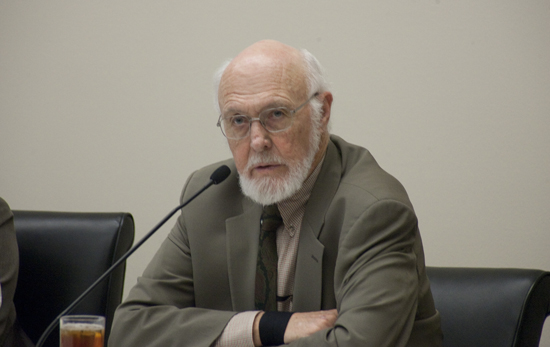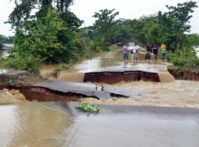-
Is the Glass Half Full or Half Empty?
January 28, 2011 By John SewellThe much-anticipated Quadrennial Diplomacy and Development Review(QDDR) demands to be taken seriously. Its hefty 250 pages present a major rethink of both American development policy and American diplomacy. Much of it is to be commended:
- It pledges to rebuild USAID as the “pre-eminent global development institution,” by making it the lead agency for major presidential initiatives on food security and global health, and making USAID mission directors the primary development advisors to chiefs of mission (i.e., ambassadors).
- It reorganizes the State Department to take on transnational issues. Notably, economic growth, energy, and the environment are given more attention, and gives development equal priority with diplomacy.
- It acknowledges that USAID and the State Department are no longer alone in promoting development, both within the U.S. government (the military, USDA, and others) and abroad (see China).
- It puts a heavy emphasis on evaluation and results and also pledges to drastically cut USAID’s dependence on outside contractors, bringing programming back into USAID and increasing the use of host country institutions (but only if they meet U.S. accountability standards).
- It takes into account trade and private financial transactions that now dwarf official flows, whether concessional or not. In many cases, remittances from migrants to their home countries now exceed official development assistance.
The Failures of the Past
However, the QDDR is not the first attempt to reform and realign U.S. development programs. The last comprehensive reform took place in 1961 when the Kennedy Administration created USAID. Since that time, there have been at least seven major attempts at reform. All of them failed, partially or completely.
Why did they fail? Some lacked congressional support. Others failed because the administration, and particularly the White House, either opposed the proposals or did not want to spend political capital; and others because their recommendations emanated from various commissions with no political constituency.
The most ambitious effort was the creation of the International Development Cooperation Agency (IDCA) in 1979 – an ill-fated attempt by Senator Hubert Humphrey to create a new umbrella agency over USAID and other parts of the government. Lukewarm support from the Carter administration, opposition from Treasury and other parts of the Administration, plus Humphrey’s untimely death, sank the initiative. IDCA continued to exist in name only and was finally abolished in the 1990s.
If the QDDR is to succeed it must have strong administration support, a congressional group (preferably bipartisan) to craft needed legislation, and strong support from civil society organizations and business.
Implementation: Unanswered Questions
The difficulty of implementing the QDDR should not be underestimated, particularly give the current political climate in Washington. So far, there is no timetable for making these changes, and major questions remain unanswered:
1. Who’s in charge? The QDDR, which was written in the State Department and USAID, stakes out an implicit claim to coordinating the other government entities that have development programs.
In September, the White House issued a Presidential Policy Directive on Global Development (PSD) that “provides clear policy guidance to all U.S. Government agencies and enumerates our core objectives, our operational model, and the modern architecture we need to implement this policy.” It also sets up an interagency Policy Committee on Global Development within the National Security Council, with the mandate to “coordinate development policy across the Executive Branch.” The QDDR asserts that the USAID Administrator will assume a “lead role” in this committee.
While both documents are similar, there are major differences in tone. The QDDR implies that the United States will have development programs almost everywhere; the PSD, however, stresses “selectivity” and a strong focus on countries that have the capacity and commitment to develop and grow. Furthermore, the QDDR put an emphasis on the role of the ambassador in coordinating all U.S government agencies operating in that country.
2. Is Congress on board? New legislation undoubtedly will be needed. Without congressional support, it will be hard to effect all the reforms called for in both documents. Congress not only authorizes policy, but perhaps more importantly, it appropriates funds.
In the last Congress both the Senate and the House were already working on development legislation but slowed down until the Obama Administration developed its overall policy. Now it is not clear how the new Congress will view development, particularly in an environment of diminished resources – note that 165 House Republicans recently supported cutting more than 80 percent of USAID’s current annual budget.
3. Can old dogs learn new tricks? The QDDR mandates massive organizational reform of both State and USAID. USAID may be the easier task and seems to be progressing rapidly. Over the last two decades, the agency has been decimated, losing almost all of its technical expertise and becoming an agency of contract-managing administrators. It now has a dynamic new leader, who recently laid out an ambitious agenda for change, and the staff is being rebuilt.
But rebuilding USAID and integrating its mission with diplomacy may be easier than reforming State. Historically, the State Department has given priority to diplomacy and policy analysis. Foreign Service officers are highly competent at both. Managing programs, however, was not a popular task and was not a route to advancement. There have been many attempts, going back to at least the Kennedy administration, to change State’s culture, none of which have had a major impact.
4. How are country choices made and who makes them? Currently the bulk of U.S. aid goes to only a few countries: Iraq, Afghanistan, Pakistan, Israel, and Egypt. The QDDR sets no criteria for country selection. It does, however, promise a focus on six areas: sustainable economic growth, food security, global health, climate change, democracy and governance, and humanitarian assistance. Moreover, the PSD stresses country selectivity and the need to make “hard choices about how to allocate attention and resources across countries, regions and sectors.” Again, no criteria are set for selecting countries. So, will the choices be driven by focus areas and need? Or will immediate political issues continue to drive country choice? The budget for FY2012 may shed more light on these questions.
The QDDR mandates that the ambassador in each country focus on development and puts them in charge of coordinating all government agencies operating in the country. The country USAID director is to be the ambassador’s “chief advisor” on development issues. Presumably this means that State expects every developing country to have some sort of development program.
5. What about the World Bank and the IMF? There are two major components of development policy that are barely mentioned in either the PSD or the QDDR – U.S. input into the World Bank and the International Monetary Fund (IMF), and serious development input into American trade policy.
The World Bank’s International Bank for Reconstruction and Development is today’s preeminent multilateral development agency, and the IMF has similarly become a de facto development institution. The World Bank and the IMF have more impact on a country’s development policy than any bilateral agency, yet U.S. policies toward both remain the responsibility of the Treasury, which has little development expertise. In contrast, a number of the World Bank’s industrial country members have appointed a senior development official as the alternate executive director.
Similarly there is no institutionalized development voice into U.S. trade policy (such as U.S. agricultural subsidies, which can have a major influence on a country’s development policy.) If the Doha Round of trade negotiations resumes, “aid for trade” capacity building will be an important part of the discussions.
6. Who controls the budget? The QDDR asserts that the current budgeting system “must be streamlined and significantly revised.” But it then sets up a “Joint State/USAID Strategic Plan” to be developed by the Deputy Secretary of State for Management and Resources and the USAID Administrator. The plan is implemented through a complex process of integrated country strategies, country foreign assistance strategies, regional and functional strategies, and gender strategies – simple, right?
However, it is not clear who has the last word. It implies that there will be agreement between the USAID Administrator and the Deputy Secretary of State. But in the real world, there will be strong differences of opinion between State and USAID, and how they are reconciled is never mentioned.
7. What’s the timetable? The QDDR gives no specifics about when the various parts of the document will be implemented. Some can be put is place quickly and many are underway; others will take much longer, and some, presumably, will require new legislation. Meanwhile, the Obama administration has only two years left in it what it presumes will be its first term. It will be important, therefore, that it prioritize the changes it wants to implement. If everything is a priority, overload will result.
Be sure to check out the other entries in The New Security Beat’s full series of analyses on the first QDDR.
John Sewell is a senior scholar at the Woodrow Wilson International Center for Scholars, who focuses on globalization; global governance; development; U.S. interests in the developing world; and aid policies and programs.
Sources: Foreign Policy, NPR, The White House, U.S. State Department.
Photo Credit: “Town Hall Meeting with USAID Administrator Rajiv Shah,” courtesy of flickr user US Mission Geneva.
 A Publication of the Stimson Center.
A Publication of the Stimson Center.







